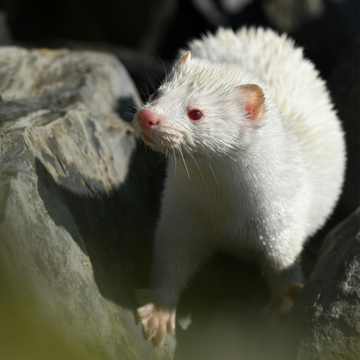In a world where ethical and sustainable choices are becoming increasingly important, cruelty-free clothing has emerged as a fashionable and conscientious trend. This article explores the rising popularity of cruelty-free fashion, shedding light on its benefits for both animals and the fashion industry. We'll delve into the concept of cruelty-free clothing, its impact on the environment, and how consumers can make more compassionate choices when it comes to their wardrobes.

Defining Cruelty-Free Clothing
Cruelty-free clothing refers to apparel and accessories made without the use of materials or methods that harm animals. This means no fur, leather, wool, or any other animal-derived materials are used in the production of these items. Instead, cruelty-free fashion relies on synthetic and plant-based alternatives.
The Impact on Animal Welfare
One of the most compelling reasons to embrace cruelty-free clothing is its positive impact on animal welfare. Traditional fashion practices often involve the exploitation and harm of animals for their skin, fur, or feathers. By choosing cruelty-free options, consumers play a vital role in reducing the demand for these practices, ultimately leading to a more humane world for animals.
Environmental Sustainability
Beyond its ethical considerations, cruelty-free fashion is also environmentally sustainable. The production of animal-derived materials is resource-intensive and often associated with pollution and deforestation. In contrast, cruelty-free materials have a smaller ecological footprint, making them a greener choice for conscientious consumers.

The Rise of Ethical Brands
The demand for cruelty-free clothing has given rise to ethical fashion brands dedicated to producing sustainable and animal-friendly products. These brands are setting new industry standards and inspiring other companies to follow suit, creating a ripple effect of positive change.
Quality and Style
Contrary to misconceptions, cruelty-free clothing doesn't compromise on quality or style. Many cruelty-free brands offer high-quality, fashionable items that are on par with their traditional counterparts. This shift in the fashion landscape ensures that consumers can make ethical choices without sacrificing their personal style.
Affordability
Cruelty-free fashion has become more accessible and affordable in recent years. As demand grows, economies of scale come into play, making ethical fashion choices accessible to a broader range of consumers.
Consumer Awareness and Education
To make informed choices, consumers need to be aware of cruelty-free options and their benefits. Education and awareness campaigns play a crucial role in helping consumers navigate the world of ethical fashion.

Materials Used in Cruelty-Free Fashion
Cruelty-free fashion relies on innovative materials such as plant-based leather, recycled fabrics, and sustainable textiles. These materials not only spare animals but also reduce the environmental impact of the fashion industry.
Supporting Cruelty-Free Fashion
Consumers can support cruelty-free fashion by choosing ethical brands, spreading awareness, and advocating for animal rights. Every purchase sends a powerful message to the fashion industry.
Challenges and Misconceptions
Despite its many advantages, cruelty-free fashion faces challenges and misconceptions. Some consumers are sceptical about the durability of cruelty-free materials or believe that they are less stylish. Addressing these misconceptions is crucial for the continued growth of the ethical fashion movement.
Celebrities and Influencers Leading the Way
Celebrities and influencers are using their platforms to promote cruelty-free fashion. Their endorsements help raise awareness and normalise ethical choices in the fashion world.
Cruelty-Free Beauty and Accessories
Cruelty-free principles extend beyond clothing to beauty products and accessories. Consumers can make compassionate choices in all aspects of their personal style.
Cruelty-Free Fashion: A Global Movement
The cruelty-free fashion movement is not limited to one region; it's a global phenomenon. From North America to Europe, Asia, and beyond, ethical fashion is gaining momentum worldwide.
Conclusion
In conclusion, cruelty-free clothing offers a compelling alternative in the world of fashion. It combines ethical considerations, environmental sustainability, and style, making it an attractive choice for conscientious consumers. By embracing cruelty-free fashion, individuals can play a part in shaping a more compassionate and sustainable future for the industry.
FAQs
What does "cruelty-free" mean in fashion?
Cruelty-free fashion refers to clothing and accessories made without using materials or methods that harm animals. It promotes ethical and sustainable practices in the fashion industry.
Is cruelty-free fashion more expensive?
Not necessarily. While some cruelty-free brands may have higher price points, many offer affordable options. Prices vary, but the demand for ethical fashion has made it increasingly accessible.
Are cruelty-free materials as durable as traditional ones?
Yes, many cruelty-free materials are designed to be durable and long-lasting. Advances in technology and materials science have led to high-quality alternatives.
How can I support cruelty-free fashion?
You can support cruelty-free fashion by choosing ethical brands, spreading awareness, and advocating for animal rights. Your purchasing choices make a difference.
Where can I find cruelty-free fashion brands?
Cruelty-free fashion brands can be found online, in specialty stores, and even in mainstream retailers. Look for certifications and labels that indicate cruelty-free products.







